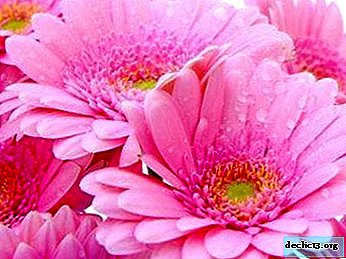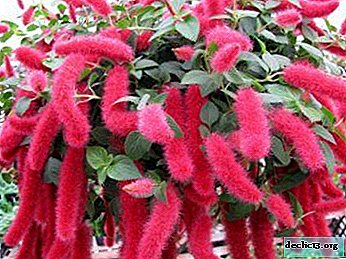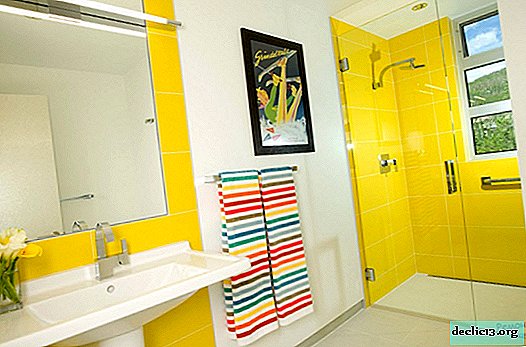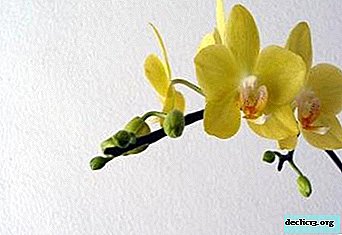What is haworthia, what types does it happen and how do its flowers look in the photo? Features of cultivation and care
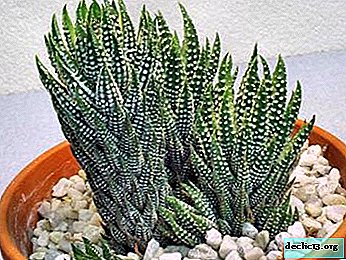
Do not be afraid to start a haworthy at home. Although the flower is quite exotic, it is not whimsical to care for.
Haworthia feels good at room conditions. Ruining her is a difficult task. The flower will not be unnoticed among other domestic plants, thanks to its decorative leaves.
You will learn more about how haworthia blooms, what are the necessary conditions for flowering, and how it looks in the photo.
What is this plant?
Haworthia is a succulent plant, reaching only a few centimeters in height. In a period of drought, the plant begins to absorb moisture, which accumulates in its stems. Haworthia is considered a houseplant. Reaches a peduncle up to ninety centimeters. Flowers are located on it and have a white or green color. It is almost impossible to see how a plant blooms at home, as it is cut in the spring. The birthplace of the flower is South Africa. It grows in arid rocky areas, skillfully hiding among shrubs and trees.
Varieties
Types of haworthia are divided into flowering and non-flowering.
Blooming include:
Pearl
The leaves of this species are small. They grow up to seven centimeters in length and up to three in width. Spikes are located along their edge. The growths are quite large, and the peduncles are short. The flowers are greenish in color.

Reynwarts
Height about twelve centimeters. This plant has a large number of leaves and they are all vertically growing. They are arranged in a spiral around the center. The length of such a sheet is four to five centimeters, and the width is about one and a half centimeters.
White growths allow the flower to feel more comfortable. Lime flowers.

Striped
This species has no stem. Fleshy leaf plates of dark green color form a dense rosette. The outer part of the leaf is quite smooth, and the bottom in white pimples. During flowering, small flowers bloom.

Scaphoid
Rook-shaped leaves form a basal rosette. They have a rich green color, and their surface is glossy. During flowering, small white flowers bloom on the long arrow.

When and how much blooms?
Haworthia blooms from April to June. But it often happens that it begins to bloom in late spring. The flowering of this plant cannot be called attractive.
Reference. Often, the flower stalk is cut off so that the haworthia does not waste strength.How does this happen at home?
Flowers are not particularly impressive in their beauty; the plant itself bears a decorative effect. Initially, a long shoot grows, and inflorescences already appear on it. Most often they are small and nondescript.
Photo
And so the flowers of this plant look in the photo.





The necessary conditions
If you want havortia to bloom, you need to create all the conditions for this.
- The right lighting. Although the flower can grow without light, but still, he needs the sun's rays. Since haworthia grows in hot climatic zones, it has learned to cope with the sun, hiding in the shade or partial shade. However, without a complete lack of sunlight, the plant will die. Nowadays, haworthia is popular and is especially appreciated for the fact that it does not require special care.
- Pay attention to the air temperature in the room where the flower is located. Differences between daily and night indicators can adversely affect growth.
Important! In the spring, maintain a temperature of twenty to thirty degrees. In the cold period, the temperature should be around eighteen degrees. Moisture should be at an average level.
- As for fertilizers, there is nothing to worry about, since the plant does not need them. Only in the case of wilting havortia, it is necessary to stimulate the root system of the flower. You can fertilize once a year using fertilizers for succulents. Do not use too concentrated solution - it will harm the plant. Top dressing in small quantities will positively affect the growth and flowering of haworthia.
- Soil and foliage should be part of the soil. Proper soil selection will have a good effect on flower development. You can buy ready-made soil for succulents or make it yourself.
From the video you will learn how to care for haworthy at home:
You can read more about haworthy care here.
Features of watering
- If you want a haworthia to bloom - adhere to the optimal watering regime.
- In the summer, watering should be moderate, and the water must be used in a secure manner.
- In winter, rainwater is suitable for succulents, since it has less chlorine.
- Moderate watering - no more than two to three times a week.
Breeding
Haworthia propagates in three different ways.
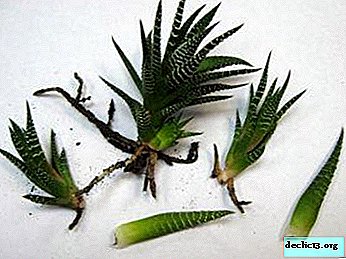 By the kids. Children who take root are separated during transplantation and planted in a separate container with a moist substrate.
By the kids. Children who take root are separated during transplantation and planted in a separate container with a moist substrate.- Haworthia is also propagated. using leaves. First, they are cut off or carefully broken off and given a couple of days to dry. Then planted in a moistened substrate. The leaves will take root for about a month and during this period the plant can not be watered.
- The hardest way is seed propagation and mostly interesting to breeders. Reproduction is done in the spring and combined with transplantation. Do not make a greenhouse for the plant, otherwise it will die.
Read more about the propagation of haworthia and its transplantation in this article.
Transfer
Mature plants are recommended to be transplanted once every two years, and this is done in the spring. Young growth requires a transplant every year. With the expansion of the roots, the pot is worth increasing. Haworthia roots are located on the surface, so you need a wide and low pot.
Recommendation. A plant develops better if the root system is a little cramped. So a large pot is not suitable here. Do not deepen the roots during planting.If not blooming
Haworthia is a plant that does not often bloom by itself, especially at home. If the succulent feels around itself a natural habitat, or at least close to it, the chances that the haworthia blooms will increase significantly. It is important to follow the rules of watering the flower.
Conclusion
As a result, we can say that haworthia is a special plant that does not require close attention. Caring for it is quite simple, it is worth observing only a few rules. Haworthia fits well into the interior and certainly does not get lost among other domestic plants.

 By the kids. Children who take root are separated during transplantation and planted in a separate container with a moist substrate.
By the kids. Children who take root are separated during transplantation and planted in a separate container with a moist substrate.